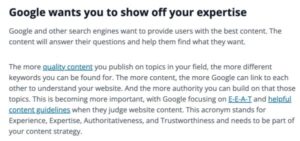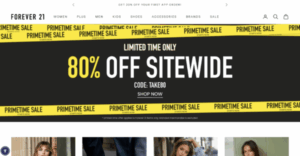SEO is, for a large part, all about getting the right content in front of the right audience. When you’ve been doing that for a while, there comes a time when you want to scale content production. Scaling content creation means you aim to make more content to reach new targets. While that’s a good idea, you need to find a way to scale while keeping the same level of quality you’ve always had. Let’s go over how to scale your content production step by step, showing common problems and solutions.
What is content scaling?
Content scaling is about making your content process more efficient. The goal should be to make more content without lowering the quality. First, you must examine every step of your content creation process — from brainstorming to research, editing, publishing, and reporting. Once you have the process detailed, you can find ways to do those tasks faster and predictably.
A well-scaled process helps you create a lot of content. This approach helps you build a solid system rather than adding more articles. For instance, your content team could develop a checklist to help review articles, introduce a content calendar to improve planning and set up clear tone-of-voice guidelines. These steps help you stay consistent and true to your brand — whether you produce one weekly article or dozens.
Why scaling content matters
Scaling content production can directly help your business. If you actively publish high-quality content on your site, search engines will understand that your site is active and reliable. By targeting the right audience with the right search intent and message, you could improve your search visibility and generate more traffic for your content. Search engines are likelier to see you as trustworthy when you publish high-quality content.
In addition, producing content more consistently and following a plan can help you reach a bigger audience. More articles mean more opportunities to write about topics that interest your different audience groups. In the end, this will broaden your brand’s presence. You’ll have a bigger chance of people seeing you as a trusted source if you offer helpful insights and solutions to their problems.
All your content can help potential customers make decisions. This content is another way to address their concerns and answer questions. By doing this strategically, you can continue to engage your audience and nudge them closer to making that final decision. Of course, whether that decision is a sale, information request, or newsletter signup doesn’t matter.
Scaling your content production also supports your branding. When you create well-organized content over a longer period, you can support your brand voice and recognition. That reliability helps build trust and strengthens your reputation.
The biggest challenges in scaling content
If you want to scale your content production, you must overcome several hurdles, which, if you don’t consider, will impact the quality and consistency of your content.
Quality control and consistency
When you produce more content, you need to make sure that every piece represents your brand well. However, catching errors or maintaining the proper tone becomes harder because you have more content to review. If you don’t do this well, there’s a risk that your articles will vary in tone or style. Without proper guidelines or a good editorial process, your content quality may suffer when you publish more and more.
For example, you can miss issues like tone, formatting, or factual errors without a standard editing checklist. If you do this for a while and people start to notice, they can form a different view of your brand. It would almost look like you don’t care about these issues. You need to set clear quality benchmarks and a solid review process. Consistent editing with fixed content rules helps everything you publish meet the same standards.
Handling different audience needs
In an ideal world, you write for different groups. You cannot target one group only. Every segment has its own interests, problems, and ideas. But if you scale your output, you risk writing mainly generic articles. No one will like that content.
If you haven’t yet sorted your audience, do so and focus your content on these specific groups. As a result, your content will be more useful for the people in those groups.
Process difficulty and extra management work
More content means more parts to manage. Each article needs research, writing, review, checking, and then publishing. This is fine if you publish a few posts a month because you can handle these steps by hand. But growing your output complicates things when you face many deadlines, writers, or quality checks.
Complexity leads to bottlenecks. If you struggle with one thing, that might eventually slow down everything. Think of it like this: when you don’t scale your editorial process, you will eventually have a pile of articles that need approval. This grinds your publication flow to a halt. Develop a system that divides tasks into repeatable steps. Use content calendars and checklists to track progress and make managing projects easier.
Balancing speed and thoughtfulness
Scaling content production can lead to pressure to cut corners to meet deadlines. When the speed of publication comes into play, there’s a high chance that content will become less developed. This shouldn’t happen. Every piece of content should be carefully planned and produced. Rushing only leads to content that lacks depth, accuracy, or clarity.
Of course, this is easier said than done. You have to find ways to increase efficiency without sacrificing the quality of your content. Start by streamlining your process, breaking it up into smaller tasks. Set up a system that monitors quality while giving you enough room to be flexible.
Building a repeatable content creation process
Scaling your content production reliably requires setting up a solid content process. That process should be easily repeatable and have clear tasks, which will help keep your team on track.
Map the entire content workflow
Describe each content task and work your way through the list of what has to be done. Write down a list of all phases, ranging from conception through publication. This will help you understand where delays or errors creep in. Consider drawing a flow diagram or another visual. This list will act as your directive.
Create a content calendar
Use a content calendar to plan your publishing schedule. Proper planning helps you keep track of deadlines, even if they are for different outlets. Thanks to your content plan, your team can write content in advance and, hopefully, without stressing out about deadlines too much.
Develop detailed briefs and outlines
Content briefs are a great way to align writers — see below for an example. A brief like this should, at least, include the subject, target audience, key messages, and keywords that the writer should target. Once approved, create an outline for the content and fill in the structure. A good content brief speeds up the writing process while ensuring that content is targeted well.
Implement a style guide
A style guide can help you ground every piece of content in a consistent tone of voice and formatting. This guide should include rules for tone, punctuation, formatting, and whatever else makes sense to share. You can easily share this guide with anyone on your team; even freelancers enjoy using it.
Use checklists for each stage
You’ll find it easier to manage once you break the process down into small tasks. Make a checklist for tasks such as researching, writing, and editing. Having a proper checklist helps you make sure that you don’t forget anything. This could be checking facts, improving readability, or using proper SEO tactics. Your lists will help you scale your content production while maintaining quality output.
Standardize tools and platforms
Use well-known tools to manage tasks in your team. Think of project management tools like Jira or Asana, shared calendars in CoSchedule, Canva for visual designs, and document templates in Microsoft Office. Many companies use Google Docs to collaborate on documents. In those cases, you can use one of the standardized Google Docs extensions, which are easier to scale.
Write a good manual or checklist for these tools so that anyone — from in-house writers to external freelancers — follows the same steps. Standardization makes this work and helps apply important SEO best practices properly.
All of these things help your team routinely produce quality content. Making the process repeatable reduces the chance of errors and wasted time, so you can scale without losing what makes your content awesome.
Strategies to scale without losing quality
Careful planning is one of the best ways to scale your content without lowering its quality. Another great option is to use clear methods to make your work more effective.
Develop a strong content strategy and workflow
As always, start with a solid plan that includes your goals, topics, and the audience you want to reach. Creating content for your audience is much easier when everyone truly understands who those people are. A good workflow avoids delays and helps people move from one task to another.
Use a detailed content calendar
We’ve discussed the importance of content calendars, and you really have to see these as your roadmap. A calendar shows all upcoming publications, deadlines, and the status of various projects. A good calendar keeps everyone up to date at all times and makes sure the work is nicely spread out. Good planning prevents missed deadlines.
Use template structures
Templates help you standardize your work, as they offer a reusable structure for common types of content. Each type of content can have its own structure to fill in. These templates help writers speed up their work while maintaining consistency across articles.
Repurpose content thoughtfully
Look at what you already have and see how it can be adapted into a different form. For example, you can split a long-form article into several videos or a series of shorter posts. This strategy saves time while also delivering fresh material in new formats. Make sure to adapt the new content to the correct audience.
Assign clear roles within your team
Find out your team members’ strengths and have them do what they do best. A writer should handle the initial draft while an editor reviews the work. Your trusted subject matter expert should check the content for accuracy. Clear roles help people do what they do best, which helps preserve content quality.
Maintaining high-quality content at scale
It isn’t easy to maintain content quality when scaling content production. To make the process more manageable, you should establish habits and use tools that help you make sure that every piece of content meets your standards.
Follow your style guide
Setting up a good style guide keeps your writing consistent. Your style guide should include information on your content’s tone of voice, the terminology you can and can’t use, and how you structure and format it. Share this guide with your team.
Schedule periodic audits
Similarly, regularly review your existing content to see if it’s outdated or needs to adapt to changes in your brand messaging. This helps keep your older content relevant and accurate.
Use tools when appropriate
Tools can help scale your content production. Even a tool like our Yoast SEO plugin can help your content work. Good content tools can help with formatting, improving readability, checking for keyword placement, and some even help with on-page SEO.
Using Generative AI for scaling content output
Using AI to scale content production might seem like a good idea, but please be careful. Generative AI can definitely be a valuable tool for content processes. However, AI is not without issues and needs interaction from real people.
Human oversight makes sure that the output aligns with your brand’s voice and content standards. You can use generative AI as a starting point or a helpful assistant, but not as a complete replacement for your real writers. Your use of AI should have a clear process to bring the content up to your desired quality level.
Conclusion to scaling content production
Scaling up content production shouldn’t mean lower quality. Mostly, it’s about knowing the content process inside out. Once you have that, you can lay out the steps for everyone to follow. With a good process, you can meet your goals and still maintain the quality of the content. Be sure to set up content templates, calendars, and clear roles for your team. Make the adjustments and see how this can lead to better results.
Bonus: Content brief template for SEO
Are you looking for a basic content brief template that helps scale your content production? Check out the one below:
| Content brief section | Details |
|---|---|
| Title/headline suggestion | [Insert title] |
| Primary keyword | [Main keyword] |
| Secondary keywords | [Keyword 1], [Keyword 2] |
| Search intent | [Informational, commercial, transactional, etc.] |
| Audience persona | [If needed, description of audience persona] |
| Content objective | [What is the content meant to achieve] |
| Benchmark content | [URLs of best-in-class content about this topic] |
| Word count range | [Word count] |
| Tone and style guidelines | [Tone and style] |
| Outline/sections | Introduction; Main points/headings; Subheadings; Conclusion |
| SEO requirements | Meta title: [Title]; Meta description: [Description]; Header tags: H1, H2, H3; URL: [Proposed URL for content] |
| Call to action | [What do you want people to do/click on?] |
| Internal and external links | Internal: [Links] External: [Links] |
| Visuals and multimedia | [List of visuals] |
| Examples/references | [Links to examples/references] |
| Deadline and submission details | [Deadline and submission instructions] |
The post Scaling content creation without compromising quality (with template) appeared first on Yoast.





